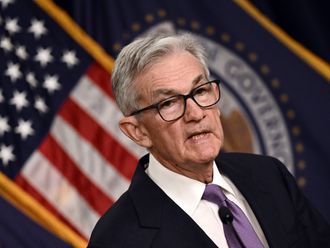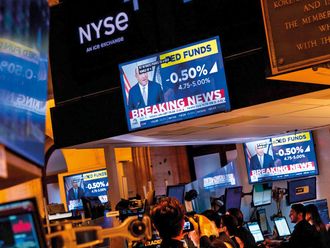
If there’s one lesson every investor had taken to heart up until 2007, it was this: buy as many assets with borrowed money as possible because asset prices always rise.
Then, what happened in 2007 (as was the case in 1929) put an expensive pause to that notion. But since the Covid pandemic, investors seemed to have been restored to factory settings. (Regardless of the direction of interest rates since the start of the pandemic, equity and real estate have been on a one-way street).
In such an environment, where common sense is not so common, it becomes difficult to argue with nuance. Yet, there is more than nuance that is at play, as Dubai’s offplan launches continue to dominate the zeitgeist (accounting for nearly four-fifths of the overall market in 2024).
As monthly payments due to developers have shrunk to below 1 per cent per month, transactions have ratcheted higher, with the explanation being that the market was immune to higher interest rates.
Curiously, it is these same analysts now arguing for a further resurgence given the prospect of falling interest rates, despite earlier arguing that asset prices were largely impervious to interest rate rises. The circularity of the argument notwithstanding, there has been some softening in the listing (and in some cases, even in transacted price data) in some of the newer communities such as Dubai Islands, Dubai Harbor, City Walk and Dubai Marina.
Is there a property glut happening?
Part of the variance in listings has been because of the wide dispersion in launches depending on the amenities offered. Even accounting for that variable, there appears to be a moderation underway in the offplan segment, giving credence to the maxim that there has never been a period of a shortage that has not been followed by a glut.
We have seen the same pattern being played out in cities such as San Francisco, New York and Miami, where prices in high-end neighbourhoods have started to fall, despite rising transactional activity in most parts of the city. This indicates that whilst there remains high levels of interest, there appears to be a shifting of sentiments in terms of chasing prices.
Multiple factors are at play, not least being corporate taxes that are now being factored into the calculus of home ownership. With the consequence that a rising percentage of high-income families are choosing to rent rather than buy when prices are roughly half the levels that they were since the start of the pandemic.
In the ready and mid-income segment, there is greater interest as well, but with rising service fees on the anvil, prospective end-users, who were earlier looking to buy (hence the rising mortgage levels) are now opting to lease for longer. In part, because they would rather invest in the capital markets and in part because the conveyor belt of launches is showing no signs of slowing down.
An instant property ‘flip’
As the number of agents in the market continue to explode, along with the incentives from developers (with commissions now exceeding 12 per cent in some cases), along with listings of newly launched properties being advertised for flipping virtually instantaneously, there is a sense that waiting is becoming the preferred choice.
After a rip-roaring price cycle for the past few years, there appears to be some prudence in catching one’s breath amidst some of the offplan frenzy. And instead focus on opportunity costs (even within the real estate space) where EMIs have forced a squeeze in some cases, and refurbishment costs have meant that there is value to be had by moving down the price ladder.
This is not being reflected in the commentary for the most part. The drop in listing prices and in some cases transactional values may indeed be a blip on the horizon. Instead, the analysis if you will remains blinkered for the most part with narratives of never slowing down prices, regardless of any micro- or macro hindrance.
And as prices will continue to rise inexorably to the skies, interest rate declines are therefore yet another reason to borrow more. Are you getting any sense of déjà vu?
This is the world we live in.













